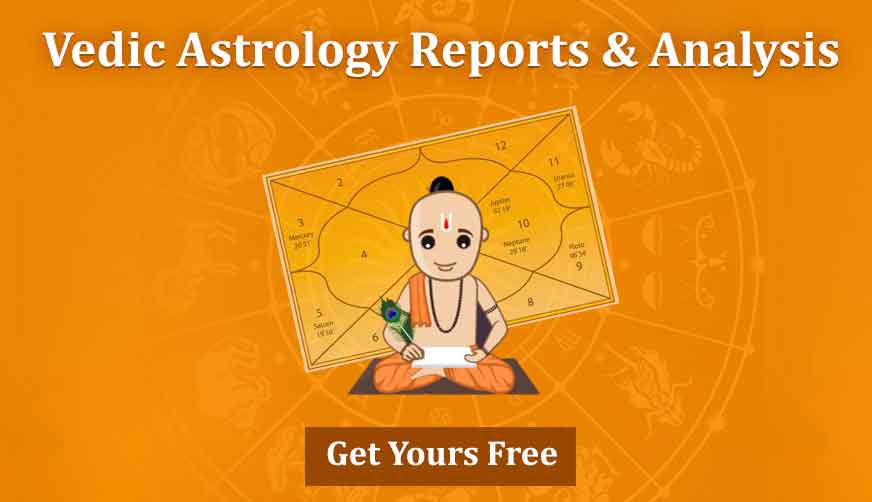Panchang and Vedic Astrology
What is Panchang
Panchang is the traditional hindu calendar which is of great importance in Vedic astrology. In this webcast, we will talk about the five different parts of a Panchang and their roles in vedic jyotish.
Meaning and Importance of Panchang
The Indian Hindu calendar is being used in India since thousands of years. This calendar, also called the Panchang has five primary elements. Though in the modern times the gregorian calendar has become more popular, the Panchang has not lost its importance and is widely used in the present times too. You can use the Panchang to select an auspicious day and time to do important work.
The word Panchang means five parts of a body. These five parts are : Nakshatra, Tithi, Yog, Karan and Vaar. Panchang is used in order to abide by the Hindu customs according to Vedic astrology. We cannot decide an auspicious day or Muhurat without a Panchang. The muhrutha is judged good or bad depending on the Nakshatra, Tithi, Yog, Karan or Vaar.
Importance of Nakshatra in Panchang
Nakshatra is the first ang, or part of the Panchang. According to Indian Vedic astrology, there are 27 Nakshatras. In muhurtha astrology, a 28th Nakshatra is also counted, called the Abhijeet Nakshatra. Abhijeet Muhurtha is considered very lucky for all significant work. Hence if you include Abhijeet, the Nakshatra count becomes 28.
Each Nakshatra is considered good or suitable for a particular activity. These activities include marriage, shifting in a new house, buying a new vehicle, starting new education, laying the foundation of a building, etc.
Each Nakshatra has 13 degrees and 20 minutes on the 360 degree zodiac and is effective for around a day.
Importance of Tithi in Panchang
There are 16 different Tithis. Purnima and Amavasya occur once every month. Other Tithis occur two times a month. These are : Pratipada, Dwitiya, Tritiya, Chaturthi, Panchami, Shashti, Saptami, Ashtami, Navami, Dashami, Ekadashi, Dwadashi, Trayodashi and Chaturdashi. Purnima is considered the 15th Tithi and Amavasya is considered the 30th Tithi.
Hindu month has been divided into two parts on the basis of waxing or waning Moon. The first part is Shukla Paksha and the second part is called Krishna Paksha. Shukla Paksha begins with Pratipada and ends on the day of Chaturdashi. The 15th Tithi is Purnima.
Krishna Paksha begins from the next day of Poornima. The first tithi of this paksha is also called Pratipada and the last tithi is Chaturdashi. The next day is the 30th Tithi which is known as Amavasya. A hindu maas or month ends on Poornima.
Importance of Yog in Panchang
Yog is the third part of the Panchang. Each Yoga is effective for a day in a person’s life. The 27 Yogas are : Vishkumbh, Preeti, Ayushmaan, Saubhagya, Shobhan, Atigand, Sukarma, Dhriti, Shool, Gand, Vriddhi, Dhruv, Vyaghaat, Harshan, Vajra, Siddhi, Vyatipaat, Variyaan, Parigh, Shiv, Siddh, Sadhya, Shubh, Shukla, Brahma, Indra and Vaidhriti.
These Yogas can be both auspicious and inauspicious. The name of each Yog reflects whether it’s lucky or unlucky. Out of the 27 Yogas, 9 Yogas are unlucky.
The calculation of Yog is done using the celestial longitude(Bhogansha) of the Sun and the Moon.
Importance of Karan in Panchang
Karan is the fourth part of the Panchang. There are 11 Karans. Four Karans are stationary while seven are movable. Shakuni, Chatushpad, Naag and Kintughna are stationary while Bav, Balav, Kaulav, Taitil, Gar, Vanij and Vishti are movable. These Karans occur eight times in a lunar month. Each day consists of two Karans called the Purvardha and Uttarardha Karan.
The length of a Karan is half that of a Tithi. Shakuni, Chatushpad, Naag and Kimstughna are inauspicious Karans. They are not considered good for any auspicious work.
Importance of Vaar in Panchang
The fifth part of the Panchang is Vaar or weekday. Vaar is the time between one sunrise and the next. There are seven Vaars, i.e, Ravivaar, Somvaar, Mangalvaar, Buddhvaar, Brihaspativaar, Shukravaar and Shanivaar. Mangalvaar and Shanivaar are considered unlucky for any auspicious activity. Ravivaar is partially auspicious. Somvaar, Buddhvaar, Brihaspativaar and Shukravaar are considered good for auspicious works.







